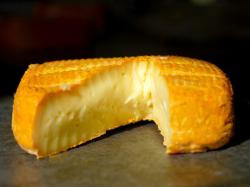A Geek's Guide To Cheese Tasting
September 23, 2015 | 1 min to read

Each September, emissaries from some of the nation’s biggest food companies gather at Rutgers University’s New Jersey Agricultural Experiment Station, in New Brunswick, for a two-day crash course aimed at helping them decode the science of human taste. Attendees from brands like Nabisco and Chipotle, and from government agencies like the U.S.D.A., might learn to map the chemical flavor profile of apple juice in order to identify abnormalities by smell. They might create a vocabulary for the scent, sight, texture, and taste of toast, to create a common language with which to evaluate baked goods. And they might design a taste test to determine whether chocolate-chip-cookie consumers really prefer more chips per bite, or just like seeing the words “extra chocolate” on a label.
These techniques, and many more like them, form the basis of a field known as sensory analysis, a scientific approach to tasting food that is most often used by quality-control and product-development types from corporations with budgets for extensive research and development. The skills of the field are meant to help a company like Coca-Cola save five billion dollars on a dud like New Coke, or to help a potato-chip brand launch a best-selling flavor without having to test multiple versions in stores.
To read the rest of the story, please go to: New Yorker
